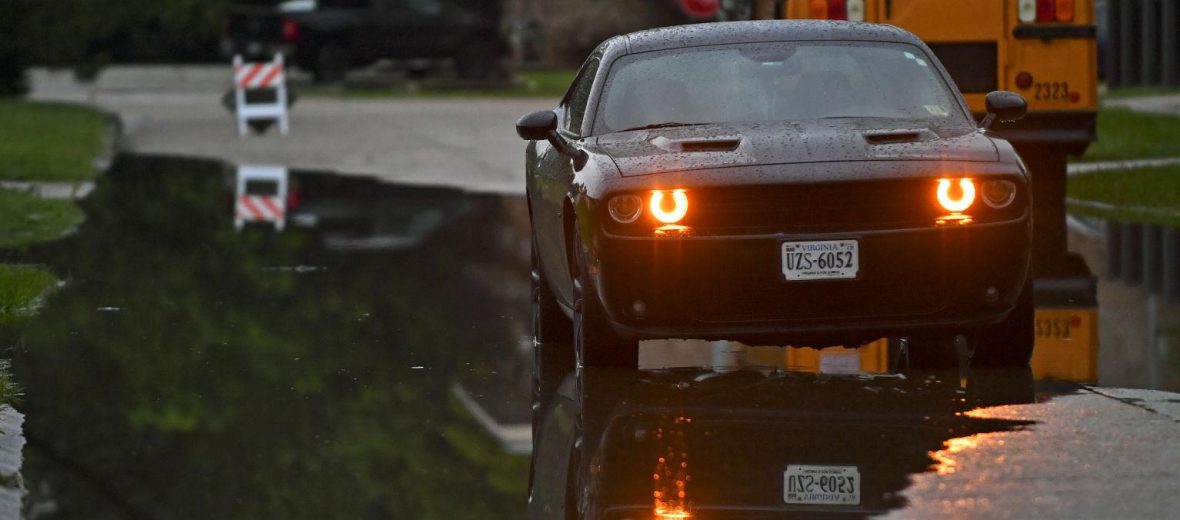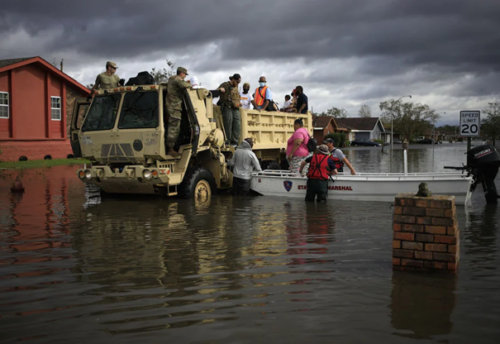
BY TERRY L. JONES | PUBLISHED SEP 25, 2019
Engineering work on the city-parish’s delayed stormwater master plan will take a significant step forward now that the city-parish has secured a significant portion of the federal grant money needed to pay for the project, Mayor-President Sharon Weston Broome announced Wednesday.
Broome made the announcement ahead of Wednesday night’s Metro Council meeting where her administration will ask council members to authorize the use of more than $21.6 million in federal and state hazard mitigation funding on a batch of projects geared toward reducing flood risks in the city-parish.
“We know two things: Our drainage systems have not kept up with development. And warmer temperatures in the Gulf of Mexico are causing more intense rainstorms,” Broome said during a press conference outside of City Hall Wednesday. “We’ve seen what happens when our drain system is overloaded.”
The seven items coming before the council will use a portion of the initial grant dollars for the initial phase of design and engineering work.
Broome’s administration touted the $15 million grant funding allocation that will go toward the long-gestating stormwater master plan at Wednesday’s news conference. Officials have said it will provide critical guidance for drainage projects and maintenance throughout the city-parish once completed.
The first set of hazard mitigation projects set to go forward include dredging, widening and infrastructure upgrades for portions of Dawson’s Creek and another section of Ward’s Creek at the Siegen Lane channel.
Officials have said the work along Dawson Creek, between Hundred Oaks Avenue and Broussard Street, will increase water flow for some of the residential communities near South Acadian Thruway and in the Garden District, where residents on one block recently said they have flooded at least 14 times within the past five years.
At its Wednesday meeting, the Metro Council at its Wednesday meeting will consider approving an agreement with HNTB, the engineering firm hired shortly after the 2016 floods to produce the storm water master plan.
HNTB project manager Melissa Kennedy said the firm will conduct extensive data collection of the city-parish’s surface and subsurface drainage systems for the 11 watersheds in East Baton Rouge. The work will include collection of data on more than 55,000 drainage structures, cross sections in over 500 miles of channels and hundreds of bridges and culverts in the city-parish.
The council’s approval is contingent upon the city-parish securing a commitment from the state’s Office of Community Development for the matching funds to utilize the federal grant money from FEMA. But that won’t likely happen until spring 2020 at the earliest, city-parish officials said.
Fred Raiford, the city-parish’s transportation and drainage director, said he doesn’t think the administration can jumpstart the work on the plan quicker by using other city-parish funds to provide the 25% local match until the OCD funds are released.
“When I asked if we use other funds besides what’s recommended would we lose that opportunity on that 25 percent match I didn’t get an answer,” he said.
Broome added, “Whenever federal funds are involved there are a lot of details connected with that. Often times there’s not the flexibility of making adjustments that mean seem logical to us to do.”


